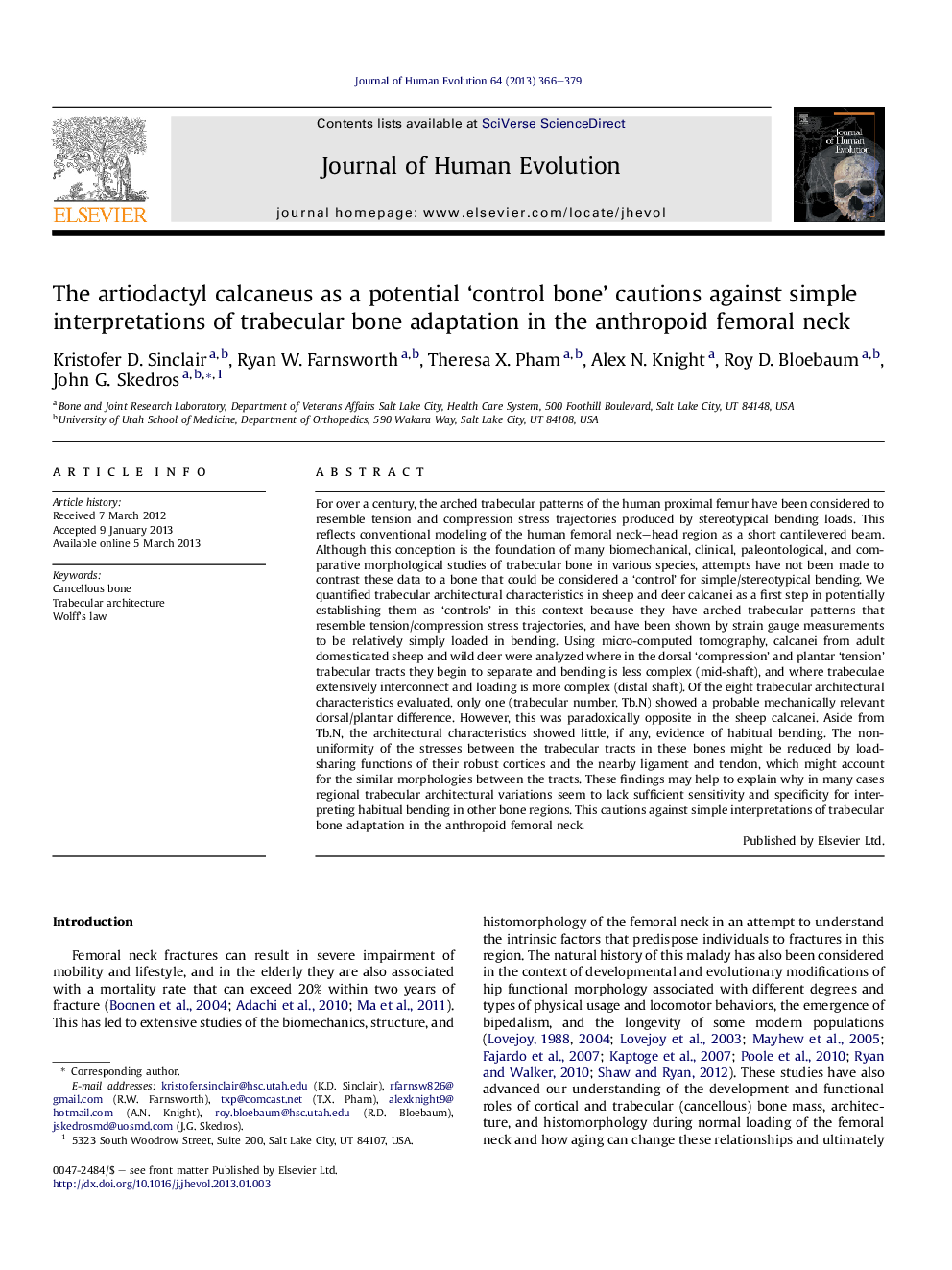| کد مقاله | کد نشریه | سال انتشار | مقاله انگلیسی | نسخه تمام متن |
|---|---|---|---|---|
| 4556257 | 1329466 | 2013 | 14 صفحه PDF | دانلود رایگان |

For over a century, the arched trabecular patterns of the human proximal femur have been considered to resemble tension and compression stress trajectories produced by stereotypical bending loads. This reflects conventional modeling of the human femoral neck–head region as a short cantilevered beam. Although this conception is the foundation of many biomechanical, clinical, paleontological, and comparative morphological studies of trabecular bone in various species, attempts have not been made to contrast these data to a bone that could be considered a ‘control’ for simple/stereotypical bending. We quantified trabecular architectural characteristics in sheep and deer calcanei as a first step in potentially establishing them as ‘controls’ in this context because they have arched trabecular patterns that resemble tension/compression stress trajectories, and have been shown by strain gauge measurements to be relatively simply loaded in bending. Using micro-computed tomography, calcanei from adult domesticated sheep and wild deer were analyzed where in the dorsal ‘compression’ and plantar ‘tension’ trabecular tracts they begin to separate and bending is less complex (mid-shaft), and where trabeculae extensively interconnect and loading is more complex (distal shaft). Of the eight trabecular architectural characteristics evaluated, only one (trabecular number, Tb.N) showed a probable mechanically relevant dorsal/plantar difference. However, this was paradoxically opposite in the sheep calcanei. Aside from Tb.N, the architectural characteristics showed little, if any, evidence of habitual bending. The non-uniformity of the stresses between the trabecular tracts in these bones might be reduced by load-sharing functions of their robust cortices and the nearby ligament and tendon, which might account for the similar morphologies between the tracts. These findings may help to explain why in many cases regional trabecular architectural variations seem to lack sufficient sensitivity and specificity for interpreting habitual bending in other bone regions. This cautions against simple interpretations of trabecular bone adaptation in the anthropoid femoral neck.
Journal: Journal of Human Evolution - Volume 64, Issue 5, May 2013, Pages 366–379